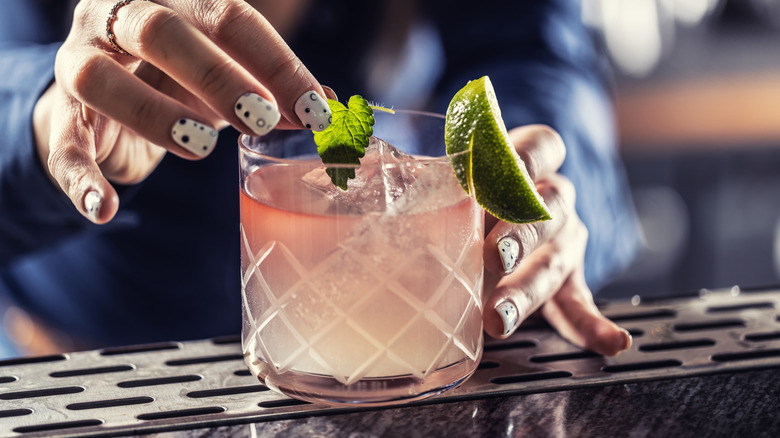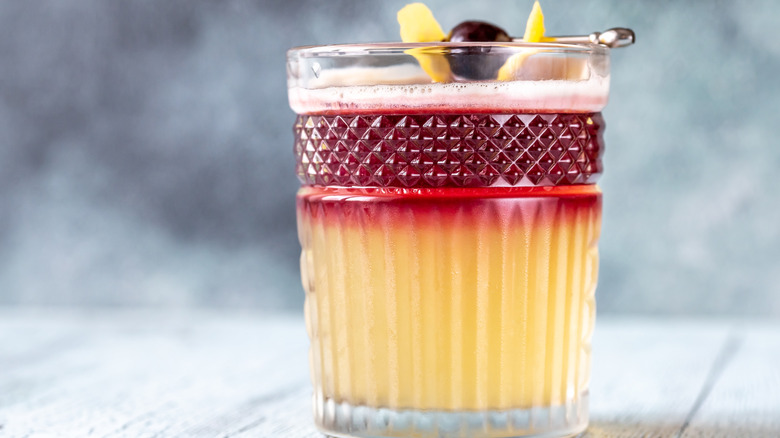The Devil's Margarita Is A Unique Concoction Of Red Wine And Tequila
One simple ingredient can transform a basic, familiar cocktail into a completely new flavor experience: case in point, the Devil's Margarita with its eye-catching float of red wine on top. It's a stunning visual, the contrast between the pale tone of the primary cocktail and the wine's deep burgundy hue. For the fresh, clean flavors associated with the classic margarita, use blanco tequila, which is unaged resulting in a bright, gentle profile.
Additionally, the traditional margarita recipe calls for freshly squeezed lime and orange liqueur; in the case of the Devil's Margarita, the red wine substitutes for the orange element bringing a juicy berry layer into play, and a bit of simple syrup rounds out the flavor. To complement the lime, choose a medium-bodied, fruit forward wine like cabernet franc. No salt rim needed — it will compete with the acidity of the wine.
The Devil's Margarita perfectly illustrates one of the many reasons the margarita enjoys such unflagging popularity: its malleability. The basic recipe can be customized in a myriad of ways: served over ice in a rocks glass, served up (without ice) in a stemmed cocktail glass, frozen, with or without salt, or rimmed with sugar. It can be spicy, fruity, smoky, or even incorporate ingredients like absinthe and activated charcoal. And, while blanco tequila is the norm, using reposado or añejo will bring an oaky quality to your drink.
You need to master the red wine float
At first glance, seeing a layer of red wine on top of your margarita might seem bizarre. But the red wine float has a history dating back to the late 1800s. During that time, the whiskey sour — a three-ingredient classic comprised of whiskey, sweetener, and citrus — was invented. The addition of the red wine turned the basic whiskey sour into the New York sour. Switch the whiskey to tequila, and the Devil's margarita is just a riff on the original. And, in order to make a successful New York sour, no matter what spirit you choose, you have to learn the art of the float.
While it might seem daunting, it's a relatively quick skill to master with some practice. Holding a spoon, backside up and parallel to the glass, slowly pour the wine over it allowing the liquid to gently slide over the spoon into the drink. Depending on how you pour, there will either be a clear division between the wine and the base cocktail, or the wine will sinuously flow down into the drink. As you sip, the wine touches your lips first, slowly mixing with the sweet, citrusy flavors underneath. Whether you're using whiskey as in a traditional New York sour or tequila as in the Devil's Margarita, the interplay between spirit and wine adds additional depth to one of the oldest classic cocktail recipes in the drink repertoire.


